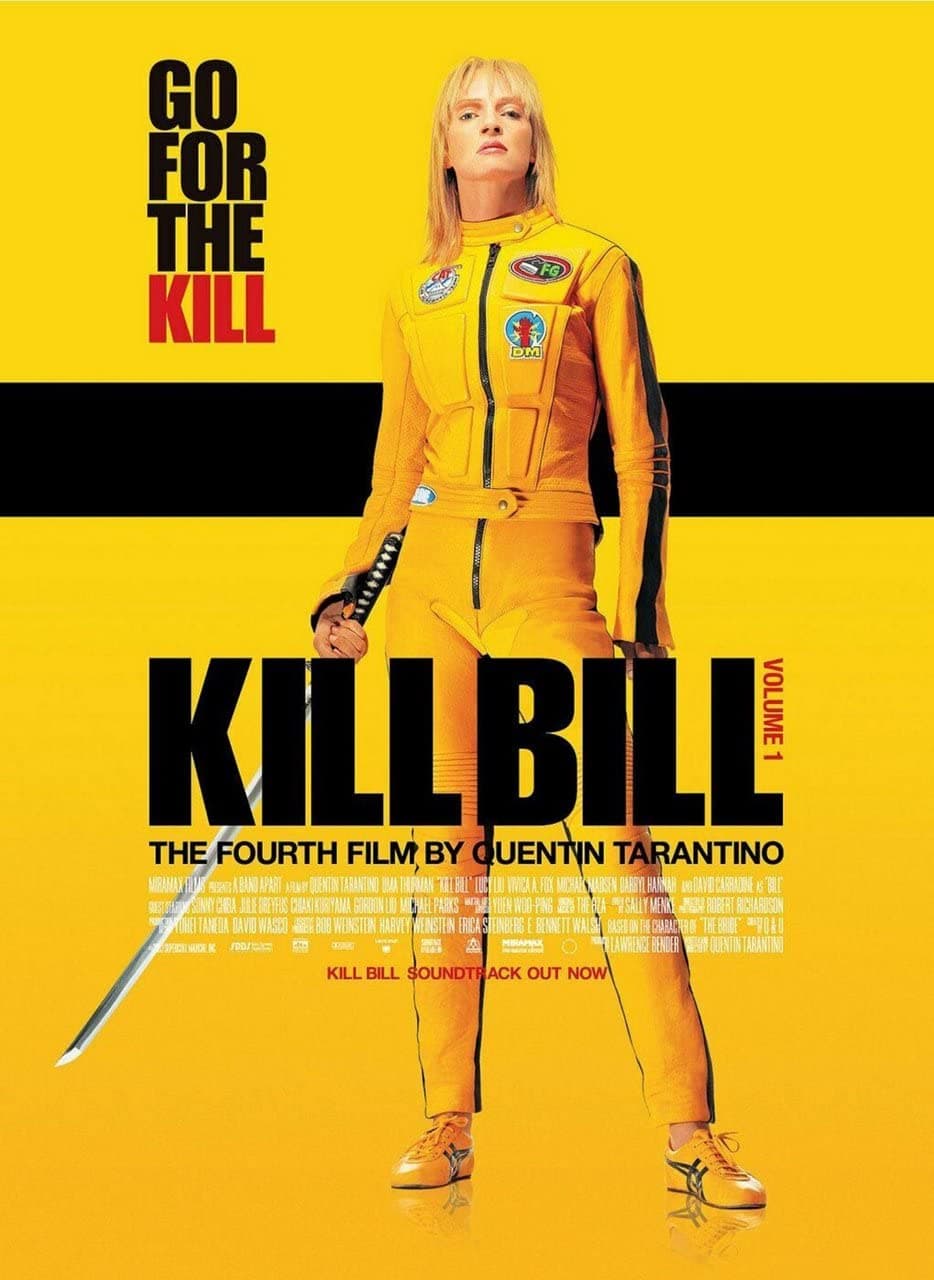
Kill Bill Vol. 1 e 2
2003
Rate this movie
Average: 4.00 / 5
(2 votes)
Director
Unique mention for the two chapters of Beatrix Kiddo's saga, released a year apart, but effectively contemplable as a single work given their stylistic and narrative homogeneity. Far from being a mere commercial division, this choice proves to be a brilliant narrative move, allowing Tarantino to distill tension, deepen characters, and explore the intricate dynamics of revenge with a depth that a single feature film could not have contained. It is a saga that breathes, taking its time to build the myth and then dismantle it, offering a postponed catharsis that amplifies the emotional and visual impact, transforming the story into a modern epic.
Tarantino is by now a brand, a trademark with an instantly recognizable style. And this mini-saga of Kill Bill is no exception. Everything is excessively immoderate in Tarantino, but with such a refined aesthetic representation that emphasis and amplification become true strengths of his Art. His cinema is a postmodern kaleidoscope, where quotation is not mere reproduction but re-elaboration, a continuous dialogue with the history of cinema itself. He does not merely pay homage; he absorbs, deconstructs, and re-fuses genres and archetypes, creating something intrinsically new, yet so familiarly rooted in the collective cinephile imagination.
A mountain of quotes, homages to genres and directors, cameos, precious objects, small and large surprises, cinephile references—an authentic mountain range of references is disseminated throughout the work. Every shot, every note of the soundtrack, every dialogue is steeped in a visceral love for the Seventh Art. This approach is not a whim, but the backbone of a narrative that feeds on the past to project itself into the future, elevating pop culture to an erudite art form.
Let's look at some examples. The cameos in Kill Bill: Samuel L. Jackson, Tarantino's quintessential fetish actor, plays Rufus, Beatrix's wedding pianist; Tim, the best man, is Stevo Polyi, Tarantino's former colleague at Video Archives; Trixie, one of the strippers, is Victoria Lucai, Tarantino's personal assistant; the dazed bartender who greets Beatrix newly risen from the grave is William Paul Clark, assistant director; the groom, Tommy Plympton, is none other than Christopher Allen Nelson, a great make-up artist. And the list could go on indefinitely. This predilection for inserting figures close to him, be they long-standing collaborators or friends, is not just a quirk but a statement of intent: Tarantino's cinema is a collective work, a laboratory where the boundaries between fiction and production reality merge, creating a self-referential and vibrant universe.
Tarantino imbues Kill Bill with references stemming from his love for martial arts, Japanese culture, manga, b-movies, spaghetti westerns, and the Italian crime genre of the seventies. This eclecticism is not accidental. The tribute to Japanese cinema manifests not only through the animated sequences that narrate O-Ren Ishii's bloody history, clearly inspired by anime and manga, but also in the aesthetics of Shaw Brothers kung fu films, with their stylized choreographies and distinctive impact sounds. The influence of Toshiya Fujita's film "Lady Snowblood" (1973), a masterpiece of female revenge cinema, is undeniable and constitutes almost a matrix for the Bride's entire narrative arc. Similarly, the spirit of spaghetti westerns, with their moral aridity and duels to the death, filters through the wide shots of the Texan desert and the murky gazes, reminiscent of Sergio Leone. No less influential is the Italian poliziottesco, a robust and often brutal genre, which Tarantino absorbs and filters through his hyper-stylized lens, imparting a raw and unequivocal energy to the choreographed violence.
By blending all these genres and holding them together narratively by means of a compelling story and good cinematic taste, we arrive at the aesthetic hallmark of this film. Beatrix is a bride betrayed and massacred on the threshold of the altar, by the very man she loved. The woman was, in fact, part of a cohort of professional killers led by Bill, a mercenary philosopher, a charming assassin who tracks down and kills Beatrix, who had left the group to retire to private life in Texas. Bill and his killers murder everyone present at the ceremony rehearsal in a remote church near El Paso. But Beatrix does not die; she remains in a coma for years, while the child she carried in her womb is taken from her during her forced slumber.
When the woman awakens, she will begin her revenge plan, seeking out every single member of the hit squad to kill them. This is the premise of a revenge that transcends mere physical retaliation, transforming into a cathartic odyssey. Her thirst for blood is not solely dictated by pain but by her self-rediscovery, her past as an assassin, and her identity as a mother. Uma Thurman's performance is a monument to female resilience, an icon of strength and vulnerability who traverses personal hells and duels to the death, from Tokyo to El Paso, bearing the weight of a lost love and a stolen daughter.
The story, divided into two works, traces the stages of this legendary revenge, as each killer in the organization falls under the blows of the Bloody Bride. Bill, the leader, will be the final piece of this bloody plan, and their ultimate confrontation is not a mere physical clash, but a verbal and philosophical duel that uncovers the complex nuances of their relationship, a fusion of love, betrayal, and respect. Violence, in Tarantino, is never an end in itself, but a language, a tool to explore the depths of the human soul, power dynamics, and the unstoppable cyclicality of revenge, right up to the last, bloody, yet unexpectedly liberating, word.
Featured Videos
Official Trailer
Comments
Loading comments...